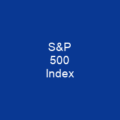The Stock Market: A Gateway to Wealth and Risk
What Is the Stock Market?
A stock market is an aggregation of buyers and sellers of stocks (shares), representing ownership claims on businesses. These shares can be publicly traded or privately owned, with platforms like equity crowdfunding allowing for broader participation. The total market capitalization of all publicly traded stocks worldwide has surged from US$2.5 trillion in 1980 to a staggering US$111 trillion by the end of 2023.
Stock Exchanges: A Marketplace for Securities
A stock exchange is a platform where stockbrokers and traders can buy and sell shares, bonds, and other securities. It facilitates transactions between buyers and sellers, providing a marketplace for price discovery. Stock exchanges may be physical locations or electronic networks, with some using open outcry methods and others relying on computerized trading systems.
Participation Factors
Investment in the stock market is influenced by various factors such as high trading prices, market ratings, information about stock exchange dynamics, financial institutions, potential for higher returns compared to other financial instruments, regional and country-specific factors, behavioral factors, factor endowments, geography, political stability, liberal trade policies, foreign direct investment inflows, and domestic industrial capacity.
Indirect vs. Direct Investment
Indirect investment involves owning shares through mutual funds or ETFs, while direct investment involves purchasing stocks directly. Indirect participation has seen a significant rise over the years, with median account values more than doubling from $22,000 to $45,000 between 1992 and 2007.
Participation Rates by Income Groups
The rates of participation and value of holdings differ significantly across income groups. In the bottom quintile, only 5.5% own stocks directly, while in the top decile, this figure is as high as 47.5%. Median values of owned and held stocks also vary widely between these groups.
Historical Context
The concept of stock markets dates back to medieval times when courtiers de change managed agricultural debts on behalf of banks in France. By the 13th century, this practice spread to Bruges, where commodity traders gathered at a market square containing an inn. The idea quickly spread across Flanders and neighboring countries.
Key Events in Stock Market History
Famous crashes include the Wall Street Crash of 1929, which marked the beginning of the Great Depression, and Black Monday of 1987, where stock markets around the world experienced massive declines. The 2008 financial crisis saw a significant drop in the S&P 500, while the 2020 crash was due to the sudden outbreak of COVID-19.
Behavioral Factors and Participation
Research by Vissing-Jørgensen suggests that fixed costs associated with investing can explain why nearly half of U.S. households do not participate in the market. Education levels, sociability, and community participation rates also influence investment decisions.
Stock Market Indexes
A stock market index is a statistical representation of a specific segment or sector of the stock market. The most widely used indices include S&P 500 (US), Nikkei 225 (Japan), Dow Jones Industrial Average (US), FTSE 100 (UK), and Hang Seng Index (Hong Kong). These indices are usually market capitalization weighted, with weights reflecting the contribution of each stock to the index.
Derivative Instruments
Financial innovation has introduced new financial instruments that depend on stock prices, including ETFs, stock options, equity swaps, single-stock futures, and stock index futures. These products are often traded outside traditional stock exchanges and considered a separate derivatives market.
Investment Strategies
Many strategies can be classified as either fundamental analysis or technical analysis. Fundamental analysis examines financial statements, business trends, and general economic conditions to forecast company performance. Technical analysis studies price actions using charts and quantitative techniques to predict price trends based on historical performance.
Risk Management Tools
The New York Stock Exchange (NYSE) operates a circuit breaker system to protect investors and prevent sudden and extreme price movements. This system consists of four types of circuit breakers, each designed to halt trading under specific conditions to maintain market stability.
Conclusion
The stock market is a complex yet fascinating arena where fortunes are made and lost. Understanding its dynamics, participating wisely, and staying informed can make all the difference in navigating this volatile landscape. Whether you’re a seasoned investor or just starting out, the key lies in knowledge, strategy, and a healthy dose of caution.

You want to know more about Stock market?
This page is based on the article Stock market published in Wikipedia (retrieved on March 15, 2025) and was automatically summarized using artificial intelligence.







